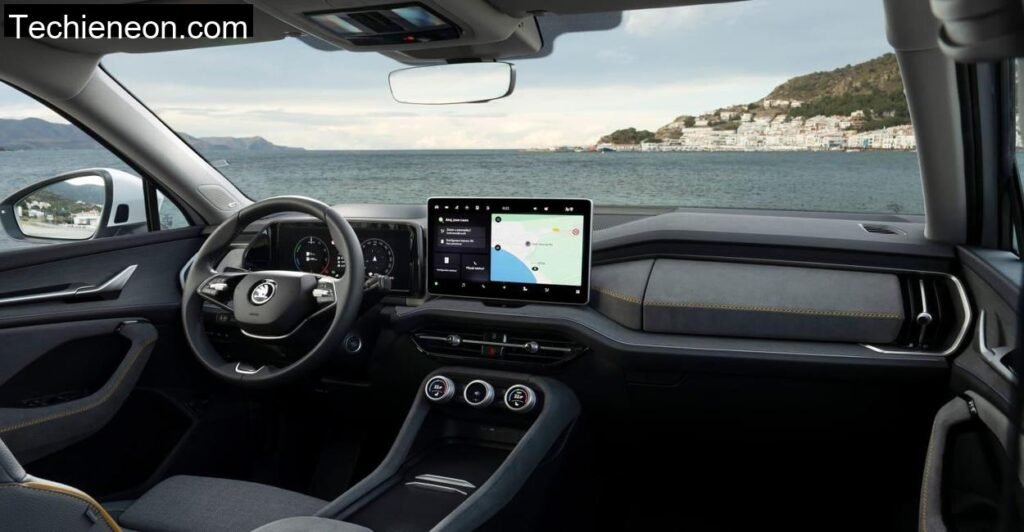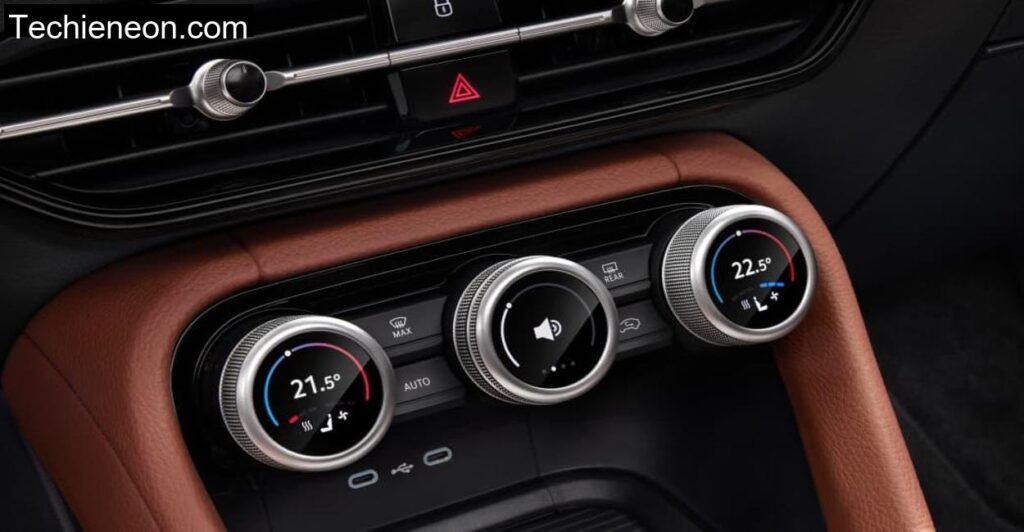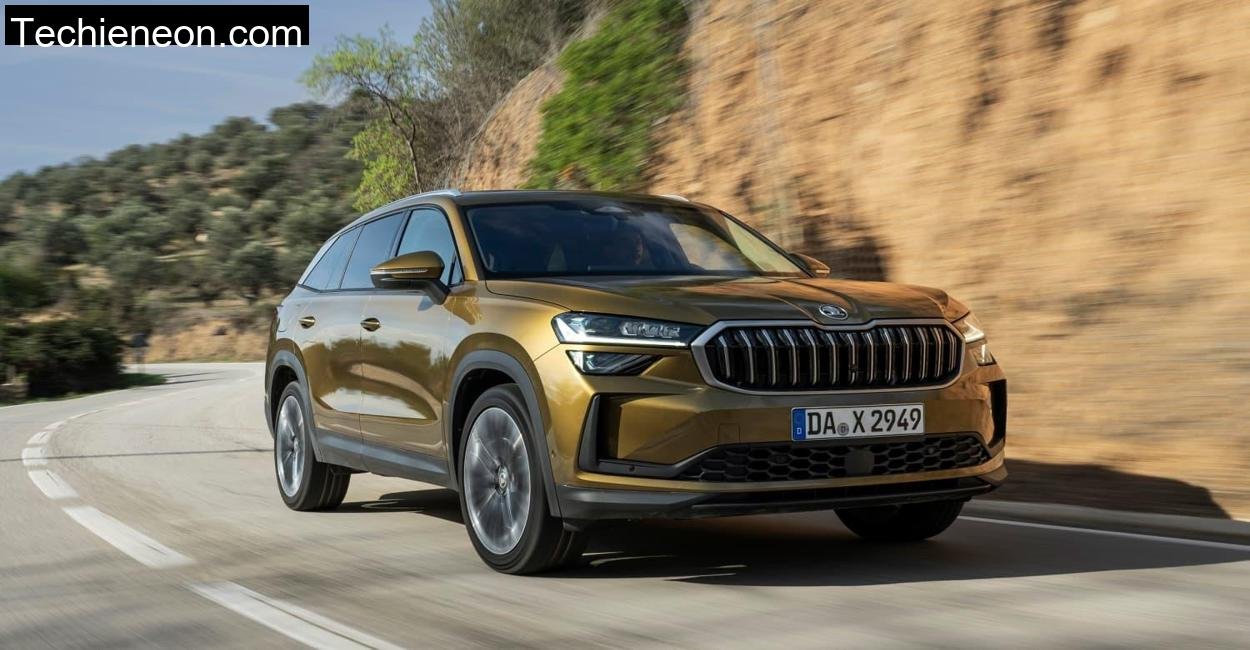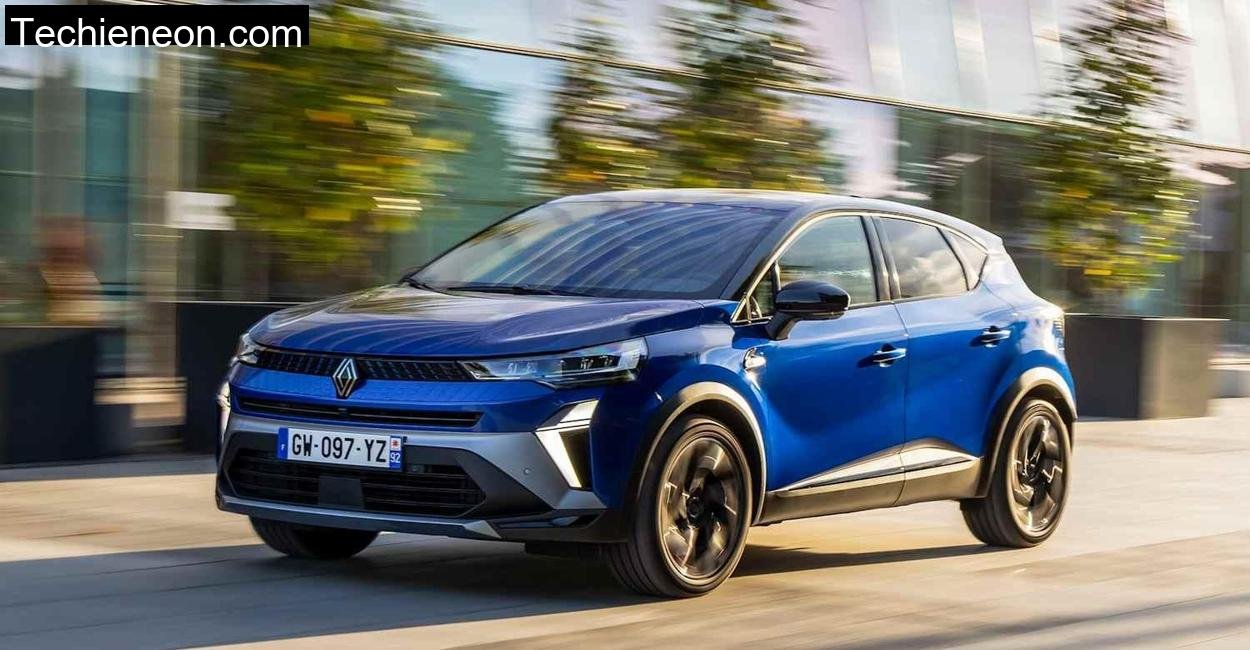Großer Beerberg. Just the name sounds like it belongs in a Nordic epic, towering pines, winding gravel roads, and the sort of biting Thuringian wind that makes you appreciate a car with heated seats. That’s where I took the brand-new Škoda Kodiaq for a deep, honest test. Not just to see how it performs in lab figures or brochure fluff, but to feel what it’s like to live with it, breathe with it, and throw it at real terrain.
This isn’t just another SUV. The second generation Kodiaq is longer, smarter, and trying harder than ever before. Families, weekend adventurers, and suburban commuters all want a piece of this machine, and Škoda has come back swinging, with diesel, hybrid, and enough cubic meters of space to make IKEA nervous.
Škoda Kodiaq 2024: Even more space
Let’s start with the obvious. The new Kodiaq is big. 4.76 meters long and visibly stretched from the last version. Driving it through the forest roads up the Großer Beerberg, I didn’t feel like I was piloting a barge. Škoda has managed to mask the size well with neat proportions and tight steering. But inside? You can feel every one of those added centimeters.
Front seats are king-size lounge chairs, well-cushioned, wide, and built for hours of travel. In the back, I had a friend who’s 2.03 meters tall stretch out and grin like he’d found the holy grail of legroom. The real surprise came when we opened the boot: 910 liters of cargo space with the rear seats up. Fold them down, and it’s an airy 2,105 liters. In real terms, that meant throwing in a full set of camera gear, a mountain bike front wheel removed, and two hiking backpacks without even folding down the second row.
For those needing seven seats, you can add a third row,but don’t expect miracles. Children will be okay, but anyone with knees won’t thank you.

Interior still with rotary switches
Modern cars often suffer from touchscreen obsession. Not the Kodiaq. Yes, it has a massive 13-inch infotainment screen (standard is 10-inch), but what sets it apart is Škoda’s stubborn insistence on keeping physical controls where they matter.
Smart Dials, Škoda’s new trick, are a blend of touchscreen logic and classic control. The outer dials do climate and seat heating/ventilation. The center one can be customized to control fan speed, volume, or map zoom, depending on your need. It’s tactile, intuitive, and brilliant in cold-weather gloves (something I can confirm thanks to a 3°C morning start at the Beerberg summit).
The materials feel rich and sustainable, recycled polyester in the seat fabric, headliner, and carpets. It doesn’t look or smell cheap, either. Add in a sliding cubby up front and a hidden screen cleaner, and you’re reminded of Škoda’s “simply clever” philosophy, thankfully alive and well.

Kodiaq: Three combustion engines, one plug-in hybrid
Škoda offers the new Kodiaq with four engines, each tailored to a different type of driver. I tried both the 2.0 TDI diesel (tested by the ADAC) and the plug-in hybrid. But there’s also a 1.5 TSI mild hybrid with 150 hp for city dwellers and an all-wheel-drive TDI with 193 hp for those who want the full SUV muscle without EV tech.
The 1.5 TSI mild hybrid is smooth and surprisingly capable. The electric motor lends a gentle push during take-off and lets the engine rest during cruising. It’s perfect for flat commutes and occasional countryside getaways.
But up here in the Beerberg, where altitude changes and corner exits test torque more than brochure numbers, the TDI and hybrid make more sense.

The Diesel TDI in the ADAC test
The 2.0 TDI with 150 hp and front-wheel drive was the version tested, and it’s the workhorse of the range. In my testing, it didn’t blow the doors off with excitement, but it was exactly what you want in a family SUV: reliable, consistent, and just powerful enough.
Climbing the narrow switchbacks between Suhl and Oberhof, the torque kicked in around 1,700 rpm and pulled strongly until 3,500. Below that, it can feel a bit hesitant, but the dual-clutch gearbox masks it well.
What surprised me most? Efficiency. Even with a trunk full of gear and liberal use of the throttle, I averaged 6.0 L/100 km. ADAC measured 5.8 L/100 km in their lab. Real-world and lab finally aligned.

Drive with the plug-in hybrid
The plug-in hybrid Kodiaq is not a gimmick. It’s a serious contender. With 204 hp of combined system power and 400 Nm of torque, it actually felt livelier than the TDI.
The 25.7 kWh battery gave me just over 90 km of pure electric range through the village roads and valleys below the Großer Beerberg. It felt strange cruising in absolute silence through steep forest passes, but also deeply satisfying.
Switching between electric and petrol power is seamless. I never noticed the changeover. The only hint was the sound,quiet electric hum giving way to the subtle thrum of the 1.5 TSI engine. One downside: the fuel tank is only 45 liters, and you lose about 165 liters of trunk space (down to 745 liters). But considering the fuel savings and short daily drives, most won’t mind.
Up to 2300 kg towing capacity
You don’t buy a Kodiaq just to drive solo. Towing is part of the appeal. The all-wheel-drive diesel can tow up to 2,300 kg, while the plug-in and the TDI FWD tested max out at 2,000 kg. During my testing, I didn’t tow, but I spoke with a camper van driver near the trailhead who had hitched a 1,700 kg caravan behind his diesel Kodiaq without a hiccup.
Škoda’s assistance systems,like trailer stabilization, parking assist with memory, and cross-traffic warning,turn hitching up and reversing into tight spaces into a one-person job. That’s not just convenient; it’s safety-critical.
Price: A little more expensive
Škoda isn’t playing the budget card as aggressively anymore. The 2.0 TDI Selection starts at €46,500. That’s not cheap. The plug-in hybrid begins at €48,530. By comparison, a similarly equipped VW Tiguan costs a bit more, but Škoda no longer undercuts by much.
What you get for your money is a full-sized SUV with premium touches, space for seven (technically), advanced tech, and honest-to-goodness usability. Still, expect to tick a few option boxes and creep past €50,000 quickly.
Technical Specifications
All the technical information comes straight from Skoda’s own website for reliability.
| Category | Details |
| Model | Škoda Kodiaq 2.0 TDI Selection DSG |
| Engine Type | Diesel |
| Displacement | 1,968 cc |
| Power | 110 kW / 150 HP |
| Torque | 360 Nm |
| Transmission | 7-speed DSG |
| Drive | Front-wheel drive |
| 0–100 km/h | 9.6 seconds |
| Top Speed | 205 km/h |
| Fuel Consumption (WLTP) | 5.3 l/100 km |
| CO₂ Emissions | 139 g/km |
| Trunk Volume | 910 l (max: 2,105 l) |
| Braked Towing Capacity | 2,000 kg |
| Unbraked Towing Capacity | 750 kg |
| Empty Weight (EU) | 1,733 kg |
| Payload | 497 kg |
| Dimensions (L x W x H) | 4,758 x 1,864 x 1,679 mm |
| Base Price | €46,500 |
Conclusion
The Škoda Kodiaq isn’t flashy. It’s not a canyon-carver or a luxury badge statement. But on a chilly, mist-cloaked morning halfway up the Großer Beerberg, I realized something: this SUV is just right.
It’s big without being bloated. Smart without being overwhelming. It tows, hauls, and travels like a proper long-distance machine. The diesel makes sense. The plug-in hybrid? Even more. And for families or explorers who need space, comfort, and confidence, this is a mighty good choice.
Sure, it’s pricier than it used to be, but Škoda has moved on from being the budget sibling. The Kodiaq now competes on merit, not just price.
Is the Škoda Kodiaq plug-in hybrid worth it for daily commuting?
Absolutely. If your daily drive is under 90–100 km, you can run mostly on electric power and save significantly on fuel.
Can the Kodiaq comfortably seat seven adults?
No. While it has a seven-seat option, the third row is best for children or very short trips. The five-seat configuration offers the best comfort and luggage space.
What’s the best engine choice for long-distance driving?
The 2.0 TDI diesel is ideal for high-mileage drivers. It offers strong torque, good efficiency, and is relaxed at highway speeds.



Leave a Comment